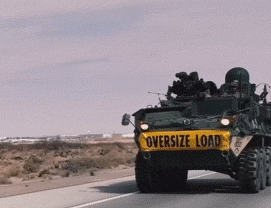A “Warning Letter” issued by the FDA details at least two instances of failing to deem ineligible donor tissue due to risk factors involving the possible presence of communicable disease. (Photo: Courtesy FDA NOTE: the inspectors shown are food inspectors, and not representative of the inspection on New Mexico Lions Eye Bank.)
Source: USDA, Eye Bank Association of America
Las Cruces Digest reached out to New Mexico Lions Eye Bank for comment, and has not received a response.
The “Warning Letter” (dated June 20, 2024) provided 15 days from reciept for a written response “outlining the specific steps [New Mexico Lions Eye Bank has] taken or plan to take to correct the noted violations. No resolution has been posted to the FDA website about resolution at the time of posting.
The complete warning letter can be read, HERE.

On May 17, 2024, the Eye Bank Association of America issued this statement:
Regulatory Alert: FDA Inspectional Focus on Donor Eligibility With Regard to Sepsis
BACKGROUND
Several recent FDA inspections of eye banks have resulted in Form FDA 483, Inspectional Observations, for not determining donors to be ineligible with a diagnosis of sepsis. All cited eye banks utilized the same Infectious Disease consultant for sepsis evaluation as part of the donor eligibility (DE) determination. Specifically, FDA cited the eye banks for not ensuring that:
- Deceased donors where there is a diagnosis of sepsis in the hospital records obtained for the hospital stay immediately preceding death are determined ineligible.
- The firm reviews all available medical records for a sepsis diagnosis for the entire hospital stay that preceded the donor’s death. Currently only the medical records from the preceding 5 days in the hospital are reviewed for such diagnosis.
In addition, FDA is now requesting copies of donor medical records for reported MedWatch adverse reaction (AR) reports.
FDA’s inspectional focus on sepsis is likely due to the two recent Mycobacterium tuberculosis (MTB) outbreaks linked to bone allografts. The first donor had symptoms consistent with TB disease (70–80-pound weight loss in two years and 2–3-week cough) and met SIRS criteria, which was attributed to other underlying conditions. The second donor had a cough for 2-3 weeks and a medical diagnosis of sepsis.
The 2021 multi-state outbreak of Mtb in the United States was linked to transplantation of a viable bone allograft product and resulted in significant morbidity and mortality. Of the 113 product recipients identified, 77% had microbiologic or imaging evidence of TB disease and three deaths were attributed to TB. Additionally, 73 healthcare personnel were identified with new latent tuberculosis infection following exposure to the contaminated product, product recipients, surgical instruments, or medical waste.
A second bone allograft-related outbreak in 2023 affected 36 recipients of viable bone matrix products. A total of 27 patients tested positive for TB infection, 5 patients had laboratory confirmed TB disease, and 2 patients died from TB disease.
FDA released Important Information for Human Cell, Tissue and Cellular and Tissue-based Product (HCT/P) Establishments Regarding Tuberculosis Outbreaks Linked to a Bone Matrix Product on September 6, 2023. This alert outlined risk mitigation strategies to identify risk factors, conditions, clinical evidence, and physical evidence that can be associated with an increased risk for TB (including active TB and LTBI) and/or an increased risk of sepsis.
RECOMMENDATIONS
Eye banks must comply with the requirements in 21 CFR part 1271, subpart C, for donor-eligibility determinations based on donor screening and testing for relevant communicable disease agents and diseases. The August 2007 Guidance for Industry Eligibility Determination for Donors of Human Cells, Tissues, and Cellular and Tissue- Based Products (HCT/Ps) will assist HCT/P establishments in complying with these requirements.
Sepsis includes, but is not limited to, bacteremia, septicemia, sepsis syndrome, systemic infection, systemic inflammatory response syndrome (SIRS) or septic shock. If any of these conditions is specifically diagnosed in the medical records during a hospital stay immediately preceding death, you should determine the donor to be ineligible.
FDA expects a full review of all “available” relevant medical records for risk factors for, and clinical evidence of, relevant communicable diseases. Eye banks that utilize an ID consultant to provide an expert opinion must submit the entire medical record for review and not just a summary of records.
Negative blood cultures themselves cannot rule out sepsis, as sepsis can be caused by viruses or MTB which would not be identified in normal blood cultures.
If a statement such as “rule-out sepsis” is noted in the medical records, and subsequent notations indicate a diagnosis other than sepsis, a potential donor might still be eligible. Eye banks should document the criteria used to determine that sepsis was not the cause of death.
Final donor eligibility determination remains with the Medical Director/MDD. The responsible person must verify and document that, on the basis of record review, release criteria have been met and they have determined that an HCT/P is available for distribution (21 CFR 1271.265(c)(1)).
EBAA met with the Center for Biologics Evaluation and Research (CBER) Office of the Center Director, Super Office of Therapeutic Products, Office of Compliance and Biologics Quality, and Office of Communication, Outreach and Development in a virtual EBAA/FDA Executive Liaison Meeting on April 18, 2024, to discuss how eye banks evaluate donors with a differential diagnosis of sepsis.
Additional guidance from FDA may be forthcoming. CBER’s Guidance Agenda for CY 2024 includes two new final guidance documents on reducing the risk of Mycobacterium tuberculosis transmission through HCT/Ps and transmission of disease agents associated with sepsis for HCT/P donors, in addition to the long-awaited Recommendations for Determining Eligibility of Donors of Human Cells, Tissues, and Cellular and Tissue-Based Products (HCT/Ps); Draft Guidance for Industry.
IMPLICATIONS
EBAA recognizes that FDA guidance that rules out all prospective donors with any notation of sepsis during their hospital stay would drastically reduce the supply of ocular tissue. In addition to our FDA Executive Liaison Meeting, we are preparing additional materials to inform and educate FDA, with an emphasis on the fact that eye banks use ID consultants as one source of information among many, and that final determination is made by the Medical Director or the Medical Director Designee.
This topic will be discussed in detail during the MAB meeting on June 7 in Kansas City. We are also in close contact with our colleagues at AATB, whose members would also be affected by FDA’s guidance on this issue.
We will continue to work this issue actively and will keep our members apprised as the situation develops.
REFERENCES
- Schwartz NG, Hernandez-Romieu AC, Annambhotla P, et al.; Bone Allograft Tuberculosis Investigators. Nationwide tuberculosis outbreak in the USA linked to a bone graft product: an outbreak report. Lancet Infect Dis 2022;22:1617–25. https://doi.org/10.1016/S1473-3099(22)00425-X PMID:35934016
- Li R, Deutsch-Feldman M, Adams T, et al.; Bone Allograft Tuberculosis Investigators. Transmission of Mycobacterium tuberculosis to healthcare personnel resulting from contaminated bone graft material, United States, June 2021–August 2022. Clin Infect Dis 2023;76:1847–9. https://doi.org/10.1093/cid/ciad029 PMID:36660866
- Wortham JM, Haddad MB, Stewart RJ, et al. Second Nationwide Tuberculosis Outbreak Caused by Bone Allografts Containing Live Cells — United States, 2023. MMWR Morb Mortal Wkly Rep 2024;72:1385–1389. DOI: http://dx.doi.org/10.15585/mmwr.mm725253a1
- FDA. Important Information for Human Cell, Tissue and Cellular and Tissue-based Product (HCT/P) Establishments Regarding Tuberculosis Outbreaks Linked to a Bone Matrix Product Published September 6, 2023
- FDA. Guidance for Industry: Eligibility Determination for Donors of Human Cells, Tissues, and Cellular and Tissue-Based Products Published August 2007.
- FDA Guidance Agenda: Guidance Documents CBER is Planning to Publish During Calendar Year 2024





